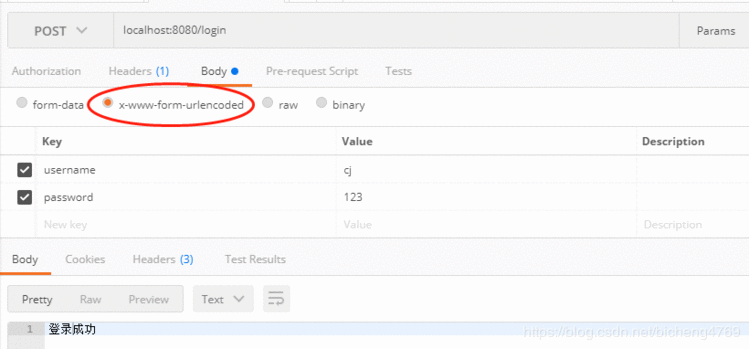项目版本:
springboot2.x
shiro:1.3.2
Maven配置:
顾名思义就是对shiro的一些配置,相对于之前的xml配置。包括:过滤的文件和权限,密码加密的算法,其用注解等相关功能。
自定义的CustomRealm继承AuthorizingRealm。并且重写父类中的doGetAuthorizationInfo(权限相关)、doGetAuthenticationInfo(身份认证)这两个方法。
shiroConfig配置:
package com.cj.shirodemo.config;import org.apache.shiro.authc.credential.HashedCredentialsMatcher;
import org.apache.shiro.mgt.DefaultSecurityManager;
import org.apache.shiro.mgt.SecurityManager;
import org.apache.shiro.spring.LifecycleBeanPostProcessor;
import org.apache.shiro.spring.security.interceptor.AuthorizationAttributeSourceAdvisor;
import org.apache.shiro.spring.web.ShiroFilterFactoryBean;
import org.apache.shiro.web.mgt.DefaultWebSecurityManager;
import org.springframework.aop.framework.autoproxy.DefaultAdvisorAutoProxyCreator;
import org.springframework.beans.factory.annotation.Autowired;
import org.springframework.context.annotation.Bean;
import org.springframework.context.annotation.Configuration;
import org.springframework.context.annotation.DependsOn;import java.util.LinkedHashMap;
import java.util.Map;/*** 描述:** @author caojing* @create 2019-01-27-13:38*/
@Configuration
public class ShiroConfig {@Bean(name = "shiroFilter")public ShiroFilterFactoryBean shiroFilter(SecurityManager securityManager) {ShiroFilterFactoryBean shiroFilterFactoryBean = new ShiroFilterFactoryBean();shiroFilterFactoryBean.setSecurityManager(securityManager);shiroFilterFactoryBean.setLoginUrl("/login");shiroFilterFactoryBean.setUnauthorizedUrl("/notRole");Map
}
shiroConfig 也不复杂,基本就三个方法。再说这三个方法之前,我想给大家说一下shiro的三个核心概念:
1、Subject: 代表当前正在执行操作的用户,但Subject代表的可以是人,也可以是任何第三方系统帐号。当然每个subject实例都会被绑定到SercurityManger上。
2、SecurityManger:SecurityManager是Shiro核心,主要协调Shiro内部的各种安全组件,这个我们不需要太关注,只需要知道可以设置自定的Realm。
3、Realm:用户数据和Shiro数据交互的桥梁。比如需要用户身份认证、权限认证。都是需要通过Realm来读取数据。
这个方法看名字就知道了:shiro的过滤器,可以设置登录页面(setLoginUrl)、权限不足跳转页面(setUnauthorizedUrl)、具体某些页面的权限控制或者身份认证。
注意:这里是需要设置SecurityManager(setSecurityManager)。
默认的过滤器还有:anno、authc、authcBasic、logout、noSessionCreation、perms、port、rest、roles、ssl、user过滤器。
具体的大家可以查看package org.apache.shiro.web.filter.mgt.DefaultFilter。这个类,常用的也就authc、anno。
securityManager 方法:
查看源码可以知道 securityManager是一个接口类,我们可以看下它的实现类:
具体怎么实现的,感兴趣的同学可以看下。由于项目是一个web项目,所以我们使用的是DefaultWebSecurityManager ,然后设置自己的Realm。
将 customRealm的实例化交给spring去管理,当然这里也可以利用注解的方式去注入。
* 获取即将需要认证的信息*/@Overrideprotected AuthenticationInfo doGetAuthenticationInfo(AuthenticationToken authenticationToken) throws AuthenticationException {System.out.println("-------身份认证方法--------");String userName = (String) authenticationToken.getPrincipal();String userPwd = new String((char[]) authenticationToken.getCredentials());//根据用户名从数据库获取密码String password = "123";if (userName == null) {throw new AccountException("用户名不正确");} else if (!userPwd.equals(password )) {throw new AccountException("密码不正确");}return new SimpleAuthenticationInfo(userName, password,getName());}package com.cj.shirodemo.config;import org.apache.shiro.SecurityUtils;
import org.apache.shiro.authc.*;
import org.apache.shiro.authz.AuthorizationInfo;
import org.apache.shiro.authz.SimpleAuthorizationInfo;
import org.apache.shiro.realm.AuthorizingRealm;
import org.apache.shiro.subject.PrincipalCollection;
import org.apache.shiro.util.ByteSource;
import org.springframework.context.annotation.Bean;
import org.springframework.context.annotation.Configuration;
import org.springframework.stereotype.Component;import java.util.HashSet;
import java.util.Set;/*** 描述:** @author caojing* @create 2019-01-27-13:57*/
public class CustomRealm extends AuthorizingRealm {@Overrideprotected AuthorizationInfo doGetAuthorizationInfo(PrincipalCollection principalCollection) {String username = (String) SecurityUtils.getSubject().getPrincipal();SimpleAuthorizationInfo info = new SimpleAuthorizationInfo();Set
}
自定义的Realm类继承AuthorizingRealm类,并且重载doGetAuthorizationInfo和doGetAuthenticationInfo两个方法。
doGetAuthorizationInfo: 权限认证,即登录过后,每个身份不一定,对应的所能看的页面也不一样。
doGetAuthenticationInfo:身份认证。即登录通过账号和密码验证登陆人的身份信息。
新建一个HomeIndexController类,加入如下代码:
package com.bjsxt.controller;import org.apache.shiro.SecurityUtils;
import org.apache.shiro.authc.*;
import org.apache.shiro.subject.Subject;
import org.springframework.stereotype.Controller;
import org.springframework.web.bind.annotation.RequestMapping;
import org.springframework.web.bind.annotation.RequestMethod;
import org.springframework.web.bind.annotation.RequestParam;
import org.springframework.web.bind.annotation.ResponseBody;@Controller
public class HomeIndexController {@RequestMapping(value = "/login", method = RequestMethod.GET)@ResponseBodypublic String defaultLogin() {return "首页";}@RequestMapping(value = "/login", method = RequestMethod.POST)@ResponseBodypublic String login(@RequestParam("username") String username, @RequestParam("password") String password) {// 从SecurityUtils里边创建一个 subjectSubject subject = SecurityUtils.getSubject();// 在认证提交前准备 token(令牌)UsernamePasswordToken token = new UsernamePasswordToken(username, password);// 执行认证登陆try {subject.login(token);} catch (UnknownAccountException uae) {return "未知账户";} catch (IncorrectCredentialsException ice) {return "密码不正确";} catch (LockedAccountException lae) {return "账户已锁定";} catch (ExcessiveAttemptsException eae) {return "用户名或密码错误次数过多";} catch (AuthenticationException ae) {return "用户名或密码不正确!";}if (subject.isAuthenticated()) {return "登录成功";} else {token.clear();return "登录失败";}}}
我们可以使用postman进行测试:
ok 身份认证是没问题了,我们再来考虑如何加入权限。
其实,我们完全可以不用注解的形式去配置权限,因为在之前已经加过了:DefaultFilter类中有perms(类似于perms[user:add])这种形式的。但是试想一下,这种控制的粒度可能会很细,具体到某一个类中的方法,那么如果是配置文件配,是不是每个方法都要加一个perms?但是注解就不一样了,直接写在方法上面,简单快捷。
很简单,主需要在config类中加入如下代码,就能开启注解:
@Beanpublic LifecycleBeanPostProcessor lifecycleBeanPostProcessor() {return new LifecycleBeanPostProcessor();}/*** ** 开启Shiro的注解(如@RequiresRoles,@RequiresPermissions),需借助SpringAOP扫描使用Shiro注解的类,并在必要时进行安全逻辑验证* ** 配置以下两个bean(DefaultAdvisorAutoProxyCreator(可选)和AuthorizationAttributeSourceAdvisor)即可实现此功能* * @return*/@Bean@DependsOn({"lifecycleBeanPostProcessor"})public DefaultAdvisorAutoProxyCreator advisorAutoProxyCreator() {DefaultAdvisorAutoProxyCreator advisorAutoProxyCreator = new DefaultAdvisorAutoProxyCreator();advisorAutoProxyCreator.setProxyTargetClass(true);return advisorAutoProxyCreator;}@Beanpublic AuthorizationAttributeSourceAdvisor authorizationAttributeSourceAdvisor() {AuthorizationAttributeSourceAdvisor authorizatiOnAttributeSourceAdvisor= new AuthorizationAttributeSourceAdvisor();authorizationAttributeSourceAdvisor.setSecurityManager(securityManager());return authorizationAttributeSourceAdvisor;}
新建一个UserController类。如下:
package com.bjsxt.controller;import org.apache.shiro.authz.annotation.RequiresPermissions;
import org.springframework.stereotype.Controller;
import org.springframework.web.bind.annotation.RequestMapping;
import org.springframework.web.bind.annotation.ResponseBody;@RequestMapping("/user")
@Controller
public class UserController {//用作权限校验的一种方式@RequiresPermissions("user:list")@ResponseBody@RequestMapping("/show")public String showUser() {return "这是学生信息";}
}
重复刚才的登录步骤,登录成功后,postman 输入
localhost:8080/user/show

确实是没有权限。方法上是 @RequiresPermissions(“user:list”),而customRealm中是 user:show、user:admin。我们可以调整下方法上的权限改为user:show。调试一下,发现成功了。
这里有一个问题:当没有权限时,系统会报错,而没有跳转到对应的没有权限的页面,也就是setUnauthorizedUrl这个方法没起作用。
其实上面的功能已经基本满足我们的需求了,但是唯一一点美中不足的是,密码都是采用的明文方式进行比对的。那么shiro是否提供给我们一种密码加密的方式呢?答案是肯定。
shiroConfig中加入加密配置:
@Bean(name = "credentialsMatcher")public HashedCredentialsMatcher hashedCredentialsMatcher() {HashedCredentialsMatcher hashedCredentialsMatcher = new HashedCredentialsMatcher();// 散列算法:这里使用MD5算法;hashedCredentialsMatcher.setHashAlgorithmName("md5");// 散列的次数,比如散列两次,相当于 md5(md5(""));hashedCredentialsMatcher.setHashIterations(2);// storedCredentialsHexEncoded默认是true,此时用的是密码加密用的是Hex编码;false时用Base64编码hashedCredentialsMatcher.setStoredCredentialsHexEncoded(true);return hashedCredentialsMatcher;}
customRealm初始化的时候耶需要做一些改变:
@Beanpublic CustomRealm customRealm() {CustomRealm customRealm = new CustomRealm();// 告诉realm,使用credentialsMatcher加密算法类来验证密文customRealm.setCredentialsMatcher(hashedCredentialsMatcher());customRealm.setCachingEnabled(false);return customRealm;}
流程是这样的,用户注册的时候,程序将明文通过加密方式加密,存到数据库的是密文,登录时将密文取出来,再通过shiro将用户输入的密码进行加密对比,一样则成功,不一样则失败。
我们可以看到这里的加密采用的是MD5,而且是加密两次(MD5(MD5))。
shiro提供了SimpleHash类帮助我们快速加密:
public static String MD5Pwd(String username, String pwd) {// 加密算法MD5// salt盐 username + salt// 迭代次数String md5Pwd = new SimpleHash("MD5", pwd,ByteSource.Util.bytes(username + "salt"), 2).toHex();return md5Pwd;}
也就是说注册的时候调用一下上面的方法得到密文之后,再存入数据库。
在CustomRealm进行身份认证的时候我们也需要作出改变:
System.out.println("-------身份认证方法--------");String userName = (String) authenticationToken.getPrincipal();String userPwd = new String((char[]) authenticationToken.getCredentials());//根据用户名从数据库获取密码String password = "2415b95d3203ac901e287b76fcef640b";if (userName == null) {throw new AccountException("用户名不正确");} else if (!userPwd.equals(userPwd)) {throw new AccountException("密码不正确");}//交给AuthenticatingRealm使用CredentialsMatcher进行密码匹配return new SimpleAuthenticationInfo(userName, password,ByteSource.Util.bytes(userName + "salt"), getName());
这里唯一需要注意的是:你注册的加密方式和设置的加密方式还有Realm中身份认证的方式都是要一模一样的。
本文中的加密 :MD5两次、salt=username+salt加密。

 京公网安备 11010802041100号 | 京ICP备19059560号-4 | PHP1.CN 第一PHP社区 版权所有
京公网安备 11010802041100号 | 京ICP备19059560号-4 | PHP1.CN 第一PHP社区 版权所有